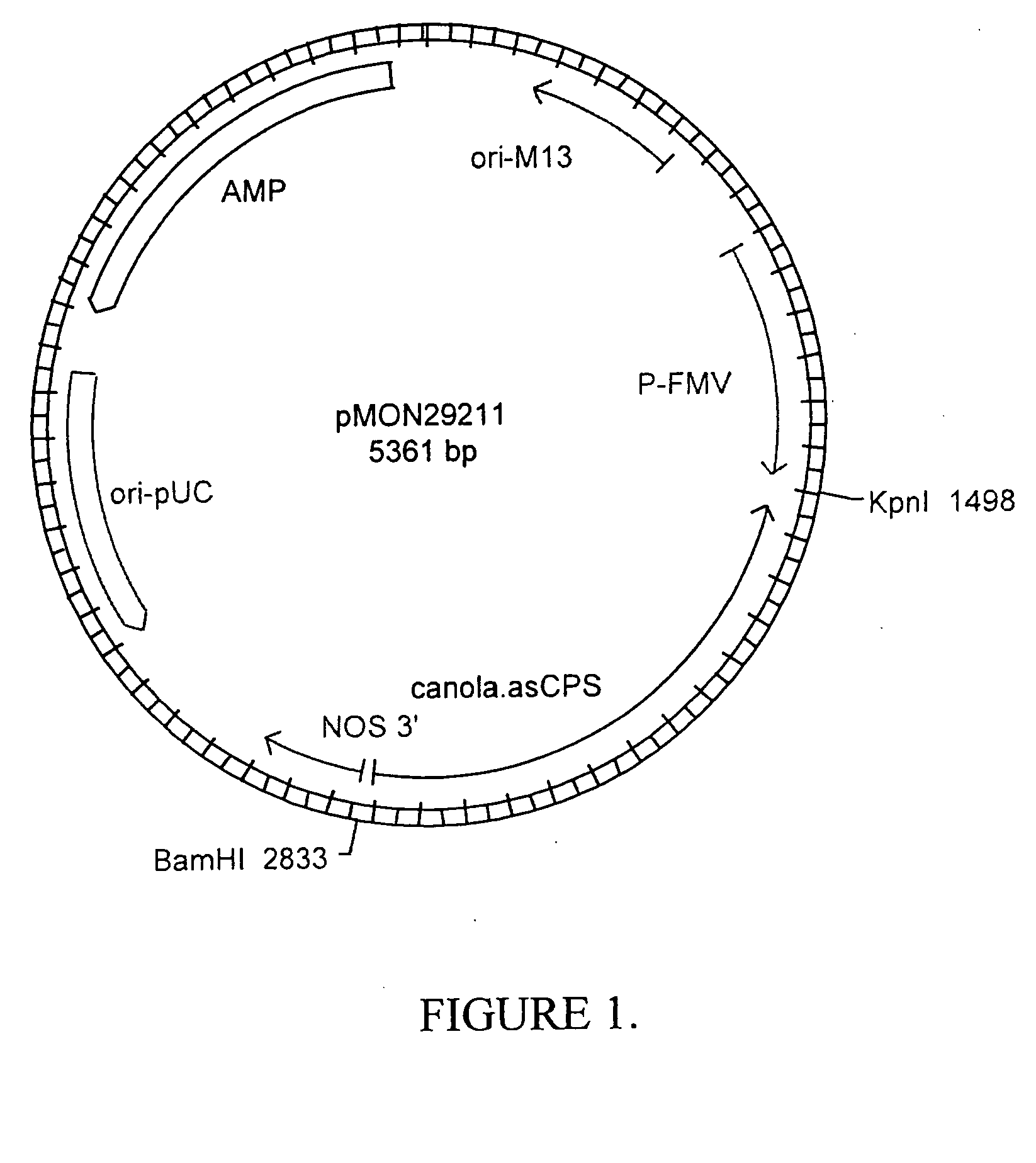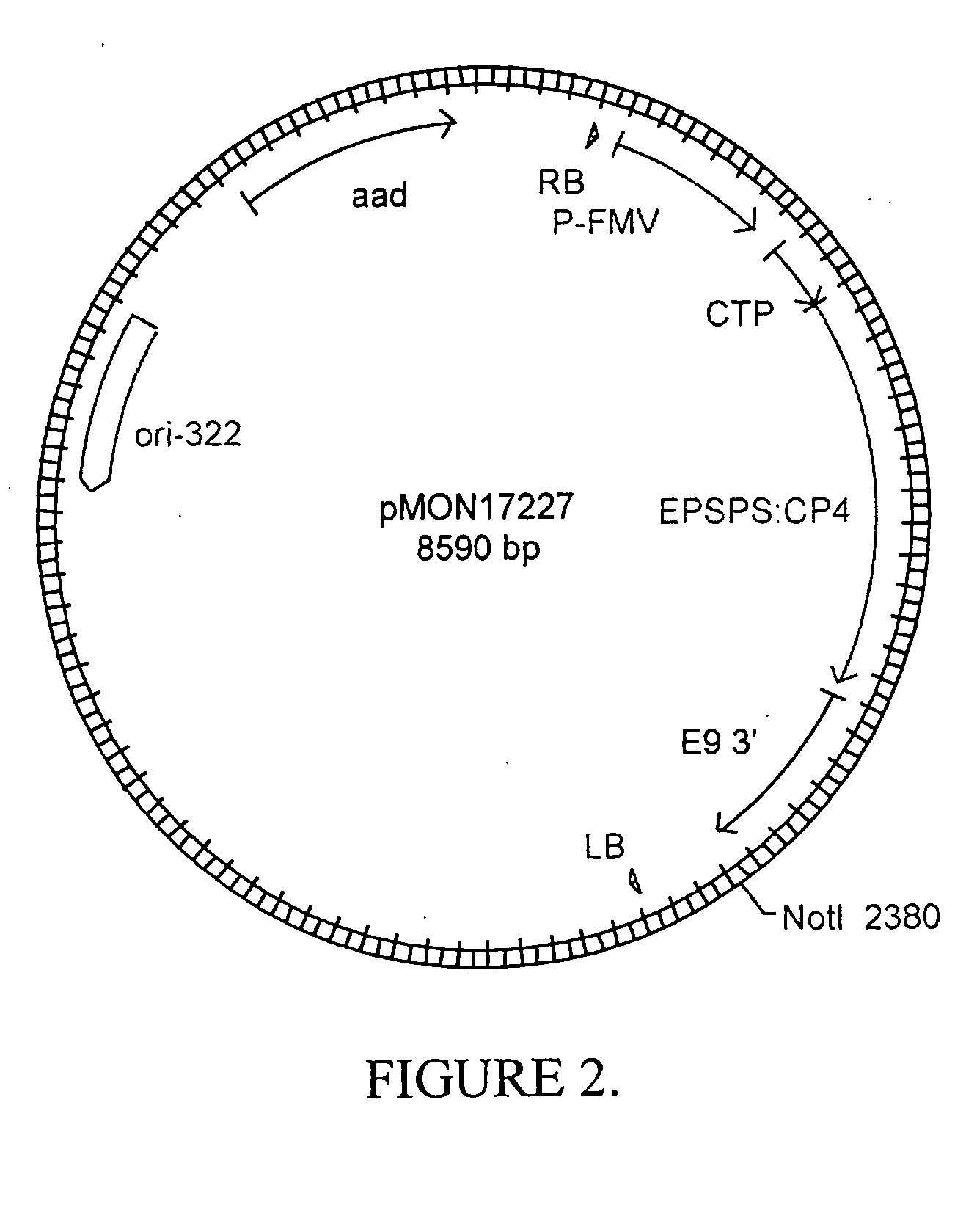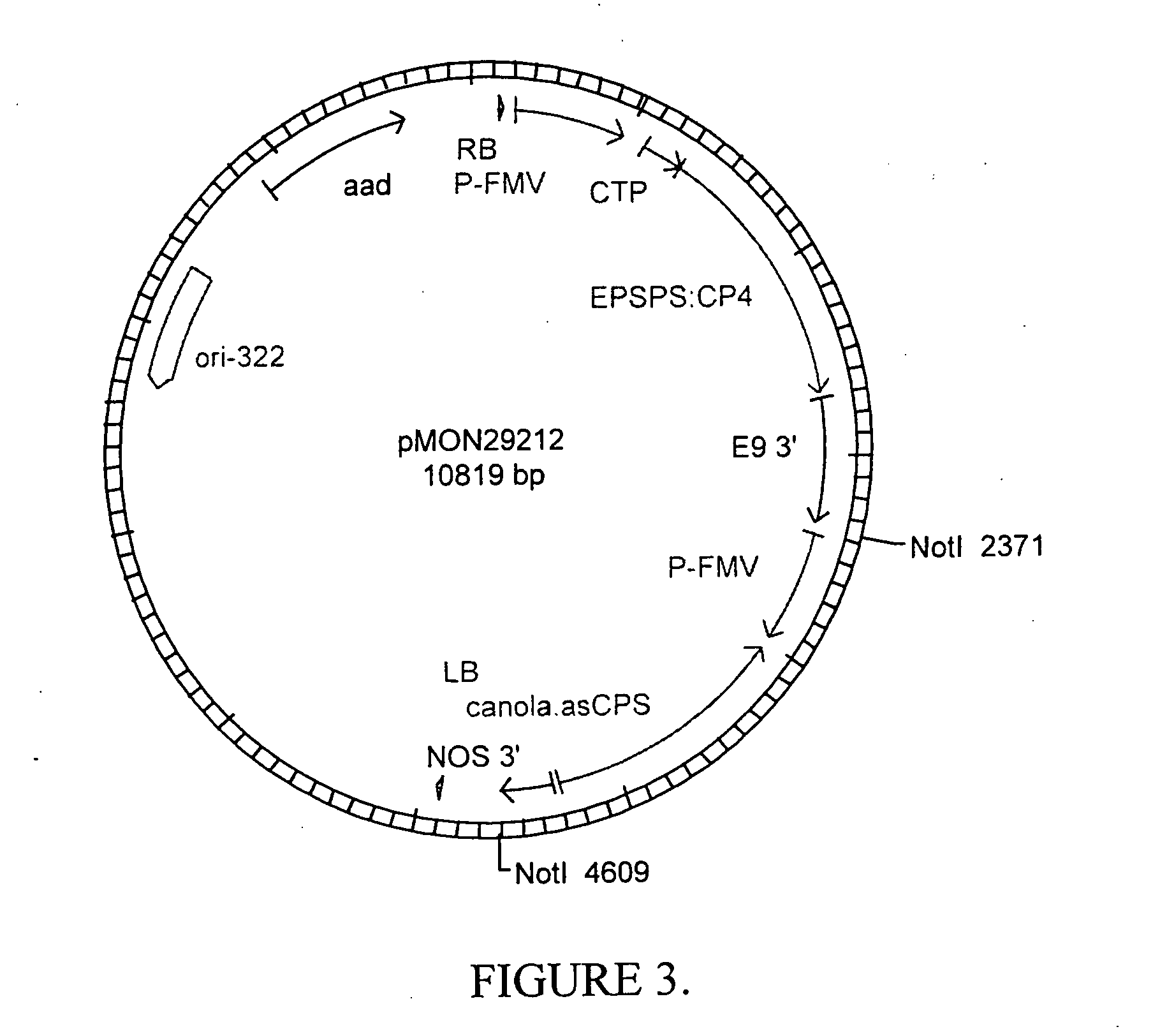Methods for controlling gibberellin levels
a gibberellin and level technology, applied in the direction of enzymology, organic chemistry, transferases, etc., can solve the problems of seed failure to germinate or germinate, reduced yield, and considerable expense for growers
- Summary
- Abstract
- Description
- Claims
- Application Information
AI Technical Summary
Benefits of technology
Problems solved by technology
Method used
Image
Examples
example 1
Canola (Brassica napus) CPS Gene
[0519] The canola (Brassica napus) CPS gene is isolated by identifying sequence conservation between the amino acid sequences of the maize (Bensen et al., Plant Cell 7: 75-84 (1995)) and Arabidopsis (Sun et al., Plant Cell 6: 1509-1518 (1994)) CPS proteins. Based on the sequence in the conserved regions, degenerate oligonucleotides are designed. These primers correspond nucleotides 439-459 and 1702-1720 in maize and nucleotides 393-413 and 1642-1660 in Arabidopsis in the respective referenced articles.
Mot 0:TCGGCITACGAYACIGCITGG(SEQ ID NO:9)Mot 7:AGCTGATGCIGAGCTTGGC(SEQ ID NO:10)
[0520] Primer sequences Mot 0 and Mot 7 are used in reverse transcriptase polymerase chain reaction (RT-PCR) to isolate canola CPS sequences.
[0521] RNA is isolated from 4 day old canola seedlings and first strand cDNA is prepared using the SuperScript Preamplification System (Gibco-BRL Life Technologies) according to the manufacturer's recommendations. The cDNA synthesized...
example 2
Soybean (Glycine max) CPS Gene
[0527] For the generation of soybean CPS gene sequences, a series of degenerate oligonucleotides are designed based on comparisons of the Arabidopsis and Zea mays sequences. Based on this information, four oligonucleotide primer pools are designed for use in PCR experiment containing mixtures potentially capable of annealing to the CPS gene coding nucleotide sequences from diverse plant species:
#1 soydeg1:GCITAYGAYACIGCITGGGTNGC(SEQ ID NO:11)#2 soydeg3:YTICAYAGYCTIGARGGIATG(SEQ ID NO:12)#3 soydeg7:CKRAAIGCCATIGCIGTRTCRTC(SEQ ID NO:13)#4 soydeg8:CATICKRTAIARIGTYTTICCIAT(SEQ ID NO:14)
[0528] Seeds from Glycine max (Asgrow, A3237) are grown in a greenhouse for 6 days. Epicotyls are collected and flash frozen with liquid nitrogen. Total cellular RNA is prepared using standard phenol-chloroform extraction procedures followed by lithium chloride precipitation to remove contaminating DNA and low molecular weight RNA species. Purified RNA precipitates are the...
example 3
Cotton (Gossypium hirsutum) CPS
[0549] The same series of degenerate oligonucleotides that are designed based on comparisons of Arabidopsis and Zea mays CPS sequences for the cloning of the Glycine max CPS cDNA are used in PCR experiments to clone the CPS gene from Gossypium hirsutum (soydeg1 SEQ ID NO:11, soydeg7 SEQ ID NO: 13).
[0550] PCR is performed on Gossypium hirsutum, cv. Coker-312, genomic DNA using the ‘Touchdown PCR’ technique (Don et al., 1991). Following a 3 minutes / 94° C. denaturation, annealing temperatures are decreased by 1° C. every two cycles between 60 and 46° C., followed by 10 cycles at 45° C., then 10 minutes / 72° C. Primers soydeg1 (SEQ ID NO:11) and soydeg3 (SEQ ID NO:12) generated a 1.3 kb PCR product. The PCR product is purified by agarose gel electrophoresis and subcloned into the TA cloning vector pCRR2.1 (Invitrogen). The subclone is sequenced using the PRISM DyeDeoxy Terminator Cycle Sequencing Kit (Applied Biosystems). The DNA sequences obtained are an...
PUM
| Property | Measurement | Unit |
|---|---|---|
| radius | aaaaa | aaaaa |
| molecular weight | aaaaa | aaaaa |
| molecular weight | aaaaa | aaaaa |
Abstract
Description
Claims
Application Information
 Login to View More
Login to View More - R&D
- Intellectual Property
- Life Sciences
- Materials
- Tech Scout
- Unparalleled Data Quality
- Higher Quality Content
- 60% Fewer Hallucinations
Browse by: Latest US Patents, China's latest patents, Technical Efficacy Thesaurus, Application Domain, Technology Topic, Popular Technical Reports.
© 2025 PatSnap. All rights reserved.Legal|Privacy policy|Modern Slavery Act Transparency Statement|Sitemap|About US| Contact US: help@patsnap.com



